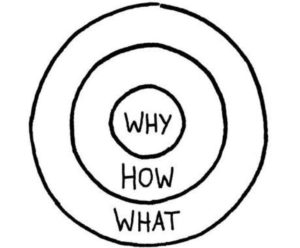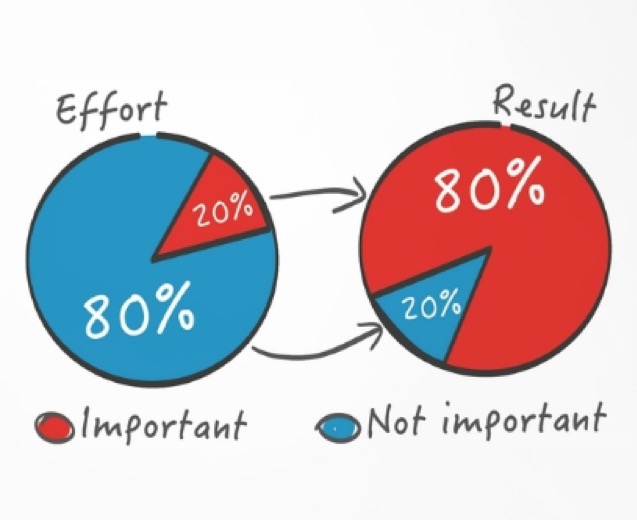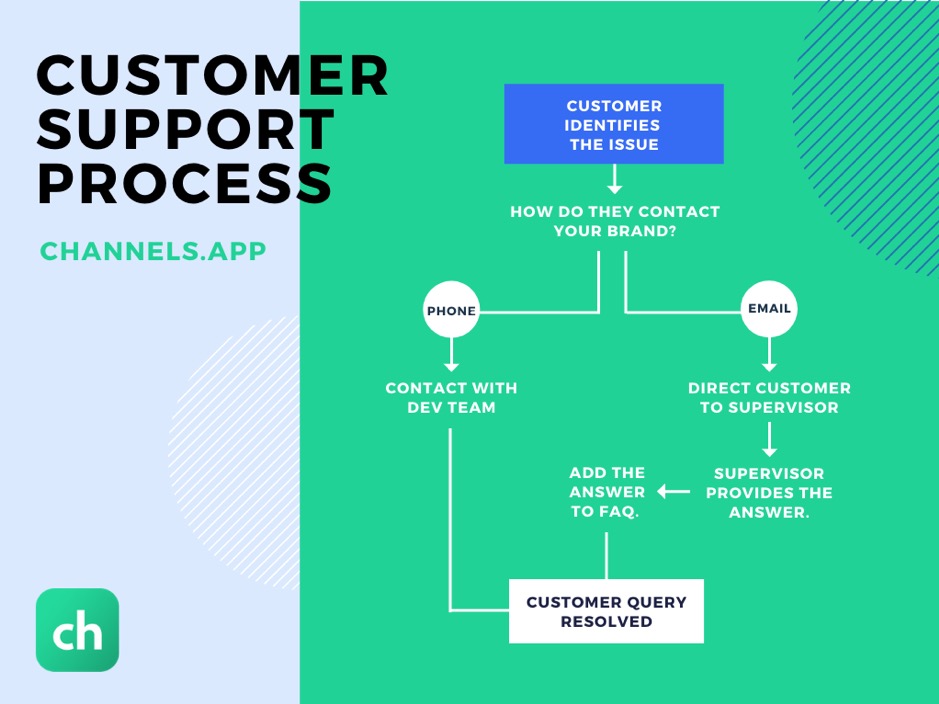How Slow Support Response Time Can Hurt Your Business (Hint: It’s more than you think)
You build a great product, invest tons of money into the development, and produce something that people are eager to spend their hard-earned money on.
It seems like you’re at the end of the road. Like success is here to stay.
So why would you decide to let that disappear? Right? It seems like an improbable thing to happen. And while it may seem obvious to you, it’s rather different for other companies.
How come?
Well, we can all agree that when companies decide to build products they invest a lot of money, time, and effort into creating something that’s worth a purchase.
But it can be all gone if you forget about an integral part of every business and that is customer support.
You may develop the best analytics software in the world but if it breaks and your customers have nowhere to go and no one to ask, the first thing they’re going to do is leave.
But customer support is not only a thing “to have”. It’s your obligation to provide one but if it’s of poor quality it will do as much harm as if you wouldn’t provide any.
Slow support response time is killing many businesses that offer great products that are valuable to the end customer. But because their customer support lacks quality, customers are not going to stay. In this article, we’re going to walk through the whole cycle of why, how, and what regarding slow support response time.
Why does it hurt your business?
How does it hurt your business?
What can you do to prevent it?
Let’s jump right into it and answer all the above questions!
Why Slow Support Response Time Impacts Your Bottom Line
First, let’s answer the question of why slow support response time can hurt your business.
The main reason why customer support is a thing is that your customers want (and often need) a way to contact your company. Without such ability, they’re left alone when something brakes or when they’re not sure how to do something.
Such lack of response may lead to, at best, fussy customers and, at worst, your customers never coming back again.
Why is the reaction so harsh?
Proper customer support is an expected feature
Take a look at this data from Accenture: 48% of consumers expect specialized treatment for being a good customer.
From the customers’ perspective, if they purchase whatever you’re selling, they deserve to be treated well. And slow support response time is the opposite of proper support.
The expectation is that you’ll be right there when they need you.
It’s hard to argue when the feature is an across-industry expectation. This means that no matter if you’re selling $20,000 enterprise software or a $10 toy. If you want your customer to retain, you must treat them well.
And this includes improvement in your support’s response time.
Subscription will be the main business model
At first look, this seems to be a random fact.
Younger generations turn into the SaaS business model. According to Oracle’s report “One Size Doesn’t Fit All” 95% of Gen Z Subscribes To Some Sort Of Service Or Product.
While Gen Z’s are not the major buying group in the USA, they are here to stay. That being said, the main component of the subscription business model is the fact that customers don’t make a one-time purchase and rather come back month after the month.
This means that they have an opportunity for consideration every 30 days. Here, the role of proper support is not only to make customers come back (ever again) but to retain them on a monthly basis.
When your business relies on customers whose repetitive buying cycle is only one month, it indicates that your customer support department will likely have much more work to do. Every 30 days the new cycle begins and thus you have to fight for that customer to stay.
Slow support response time equals canceled subscription which for a SaaS business is an inevitable loss.
Your customers want human interaction
The same Oracle’s report suggests that 60% of customers want human interaction.
Again, we circle back to customers’ expectations. Because of how business is done, customers expect that there’s a way to connect with a seller.
Depending on a particular person, their favorite way to reach out might be the phone, email, or a short chat via on-site live chat. No matter what it is, there must be a human on the other side.
Now, let’s take a pause to think about how a regular human-to-human interaction looks like.
When you meet someone, no matter if it is a new or a familiar face, you greet each other and, well, talk. If someone asks you a question, you answer it. Someone waves at you, you respond with a wave.
The immediate reaction is always there. But, some companies clearly forgot how human interaction looks like. When you reach out for help, they make you wait hours if not days until they respond.
This doesn’t look like a human interaction but like a 15th-century postal system.
How Slow Support Response Time Hurts Your Business
Now that we know why slow support response time and poor customer support, in general, hurt your business, let’s take a look at how it happens.
What exactly does the reaction look like? After all, money doesn’t flee from your pockets because you didn’t answer the phone. Or does it?
Customers are highly impatient
Some will say that I overuse this resource but the “One Size Doesn’t Fit All” is a goldmine of takeaways on customer behavior (No, they don’t pay me to say so. I wish they did!).
The best takeaway, in my opinion, is this one:
“One-third of respondents will actually walk away from a brand after having a disappointing interaction. If just one disruptive experience can impact a company’s bottom line, imagine what consistently poor CX could bode over time.”
The key part is “just one disruptive experience”.
You get an idea. There’s no room for mistakes. This also puts some seriousness into how businesses should treat their customer support.
If just one poor experience sends 33% of customers packing this means that just a few minutes on hold may mean that you’re losing $30 a day, $900 a month, and $11000 a year.
Why?
Because your response time is slow!
Those who currently have the money pick up their phones
Earlier I highlighted how important your support response time is because of the growing adoption of a subscription business model that is common among Gen Z.
But…
While getting your business ready for the future is key, you can’t forget about the present. After all, if you’re not making any money now, it’s likely you won’t make money in the future.
Why am I saying this cliché?
Let’s go back to our friends at Oracle and read what they have to say on how Baby Boomers prefer to contact companies:
“51% of Baby Boomers go straight to the source and they call a company directly when they have an issue. While it’s a satisfying experience for some, one-third of Baby Boomers equate contacting customer service to “stubbing their toe” or even “going to the dentist.””
Oh, and I forgot to mention that Baby Boomers are the wealthiest generation in the USA. According to CNBC “Baby boomers’ wealth is 12 times greater compared to millennials”.
The phone is an overlooked means of customer support that gets often associated with the old-time solution. And yet, those who have money are the most comfortable reaching the company by making a quick call.
Set for the present, get ready for the future
We’ll explore generational differences for a while.
As I’ve mentioned before, it’s important to get ready for what’s about to come but you’ll be able to do so only if you’re doing, at least, okay now.
Guys at Oracle found what’s the favorite means of contact for each generation.
It turns out that not only Baby Boomers find the phone as the best customer support solution. That’s because Gen X and Millennials also prioritize this way.
The conclusion is that if your company targets people age 26 to 76, the phone should be a #1 customer support solution to optimize. No hiccups or slow response time here.
What about Gen Z (18-24)?
Google!
Gen Z’s feel more comfortable roaming around the web in order to find the answer on their own. This means that they’ll likely combine many solutions before solving the problem.
They might start with a Google search that will take them to a YouTube video in which they’ll find an article that explains how to DIY the solution.
Such an approach changes how you, as a company, should approach customer support. You have to anticipate how your users might look for an answer and try to make it as easy to find as possible.
Here, slow support response time is not how long it takes until one of your reps answers the phone but how many searches it takes to find the answer.
What You Can Do To Improve Support Response Time
At this point, we’re at the outer ring of the Why→How→What cycle.
Now that we know why slow support response time hurts your business and how does it do so, it’s time to answer the What question.
Namely, what can you do to prevent it?
I’ll describe three steps and concepts that your business can take and adapt in order to provide excellent customer support that your customers deserve.
1. Pick the best software possible
You’re likely familiar with the 20/80 Pareto Rule.
The minority of efforts is responsible for the majority of the results. The same goes for customer support. Little choices that you make at the beginning of setting up this department will determine how well your company will do in terms of providing service and support.
Thus, it’s crucial to take time and make smart choices right from the get-go.
Nowadays, customer support is still the domain of human contact even though there’s plenty of emerging solutions such as chatbots or conversational AI bots.
Yet, because of how we communicate, these human contact takes place via certain software. And that’s where most companies set the wrong foundation.
Proper customer service software is as crucial as the quality of the support itself. After all, it won’t matter if your representatives are the nicest people in the world if your customers won’t be able to hear them because of the poor call quality.
Go back to the point where I highlighted how big of an impact customer support has on your bottom line. Now imagine that your customer software stack goes down and there’s no way for your customers to reach your brand.
Statistics show that 3 in 4 customers will switch to another brand after just one poor customer service experience. Don’t risk losing 3/4rd of your customer base just because of the poor software choices.
No matter what customer service channel you want to target, choose the best customer service tools.
It’s the beginning of the journey and if you decide on a poor ship it’s likely you’re going to go under quite soon.
2. Tailor your customer support to your audience
Here we’re going back to the Set for the present, get ready for the future paragraph.
I bet you know who your target audience is and you know basic information such as their age. If you don’t, the best way to do it is to run customer interviews and get to know your audience.
Alternatively, you can use tools such as Clearbit to analyze your website traffic and discover who’s interested in what you have to offer.
In general, if you target Millennials to Baby Boomers you need a phone solution for your customer service.
If you target Gen Z and younger, you need to explore how your customers search for your company in case of an issue. Make YouTube videos, optimize your content for organic search, and be present where your audience is.
The easiest way to tackle this issue is to go omnichannel. It’s nothing new and customer service experts have been yapping about it for the past couple of years.
Instead of providing customer support just by the phone or solely via email, connect various means and be present everywhere according to your customers’ presence.
Also, by diversifying the number of customer requests per customer service channel, you lower the friction that usually leads to slow support response time.
3. Remove bottlenecks for faster problem resolution
Let’s pick up where we’ve ended the last point.
Going omnichannel is one way of removing possible bottlenecks from your customer support.
By identifying and fixing these weak points, you get one step closer to frictionless service that your customers will enjoy.
Slow support response time is often the effect of the customer support process that no one gave a second thought.
So how to tackle that?
Map the entire process from your customers’ perspective.
Describe exactly what they have to do to resolve their issue. This includes the way they contact your company, how your reps respond to these requests, how these requests get processed, and how your reps get back to your customers.
Identify the whole customer→company→customer process.
In the simplest form, it can look like this:
This way, you’ll find out which parts of the process take up most of the time, and thus you’ll be able to optimize them.
Remember, you can only fix issues that you’re aware of. If you become complacent with certain mistakes that you might have made in the ideation process it won’t make these issues go away. The only thing that’ll go away is part of your revenue.
Time to Tackle That Slow Support Response Time!
As you’ve seen, support response time matters. Big time.
If the software you use goes down, you lose customers.
If your reps are not eligible for the job, you lose customers.
If your customer support is of poor quality, you lose customers.
Choose the best software, tailor your support to your audience, and remove bottlenecks. All these steps will take you closer to what your customers will call excellent customer support!






